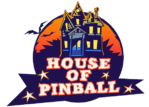If you’ve ever browsed for a pinball machine for sale, you’ve probably heard the phrase “it’s been shopped and reflowed.” What does that mean? Most of the time—it means soldering.
Soldering is one of the most critical repair skills in pinball restoration. From fixing flickering lights to reviving dead flippers, mastering the art of soldering ensures reliable gameplay, long-lasting performance, and smart ownership.
At House of Pinball, every machine we sell is tested and tuned by real technicians. This guide pulls back the curtain on the repair process, teaching you how soldering works, what to look for when buying, and why clean work equals quality play.
🔧 Why Soldering Matters in Pinball
A pinball machine is a complex web of:
- Switches
- Solenoids
- Lamps
- Boards
- Connectors
All of them are electrically joined by soldered joints. A single cracked joint can mean:
- Flippers stop working
- Lights flicker or go dead
- Boards reset during play
- Multiball doesn’t trigger
If you’re repairing a machine—or buying one—solder quality is not optional.
🧰 What You Need to Start Soldering
Before heating up your iron, gather the right tools:
| Tool | Purpose |
|---|---|
| Soldering iron (25–40W) | Heats components evenly |
| 60/40 rosin-core solder | Creates conductive, lasting joints |
| Solder sucker or wick | Removes old solder |
| Tweezers or hemostats | Hold components safely |
| Flux | Improves flow and adhesion |
| Magnifier or headlamp | For precision work |
| Ventilation or fume extractor | Safety first! |
🎯 Pro Tip: Use a temperature-controlled soldering station for consistent results. Cheap irons can cause overheating and damage.
🔥 The Basics: How to Make a Perfect Solder Joint
Whether you’re repairing a flipper switch or installing new LEDs, the process is the same:
Step-by-Step:
- Clean the joint (no oxidation or old solder).
- Tin the iron tip with a small amount of solder.
- Heat both the component and the pad—not the solder.
- Feed solder into the joint, not onto the iron.
- Wait 1–2 seconds, remove iron, and let it cool undisturbed.
- Inspect: A good joint is shiny, smooth, and conical.
Avoid:
- Cold joints (dull, brittle, don’t conduct well)
- Overheating pads (can lift the trace from the board)
- Too much solder (can cause bridging between pins)
✅ Test Tip: After cooling, gently tug the wire or part. If it moves, redo the joint.
🛠️ Common Pinball Repairs That Require Soldering
Here’s where soldering really matters in pinball:
💡 1. Lamp Sockets & LEDs
Symptoms: Random flickering, GI lights out.
- Reflow solder at lamp sockets
- Clean and reconnect wires
- Replace sockets if corroded
🎯 Buyer Tip: LED conversions can overload old joints. Ask if boards have been reflowed to support modern lighting.
⚙️ 2. Flipper Assemblies
Symptoms: Weak flips, no movement.
- Re-solder coil wires (they often vibrate loose)
- Replace EOS (End-of-Stroke) switches
- Confirm clean joints at driver board
🔲 3. Connector Pins
Symptoms: Intermittent resets, scoring issues.
- Old games use Molex pins that corrode over time
- Reflow connector headers on CPU or power boards
- Replace female connectors with trifurcon pins for better grip
✅ At House of Pinball, all connectors are tested and re-soldered before sale.
🔋 4. Battery Holders & NVRAM Mods
Symptoms: No high-score save, boot issues.
- Remove old batteries (they leak acid!)
- Install new holders or upgrade to NVRAM
- Carefully solder to the MPU board
🎯 Pro Tip: When buying a used pinball machine, always check for clean battery work. Battery damage can destroy the main board.
🧠 How This Helps You Buy Smarter
If you’re shopping for a pinball machine for sale, understanding soldering helps you avoid bad buys.
| Question to Ask | Why It Matters |
|---|---|
| Have key boards been reflowed? | Prevents resets, dead switches, coil failures |
| Were any repairs made with lead-free solder? | Older machines often fail with improper repair |
| Are connector pins tight and clean? | Loose pins = intermittent game failures |
| Has acid damage from batteries been neutralized and cleaned? | Prevents long-term board rot |
🎯 Warning Signs:
- Globs of dull solder on boards
- Scorch marks or lifted pads
- Wires twisted together with no solder
- Electrical tape over permanent joints
At House of Pinball, we back every sale with transparent repair logs—and yes, soldering is always part of it.
🧲 Ready-to-Play Machines = Less DIY
We get it—not everyone wants to solder. That’s why we offer:
✔️ Machines with fully inspected joints
✔️ LED conversions with proper reflow
✔️ Acid-damage remediation
✔️ Lifetime tech support for every buyer

